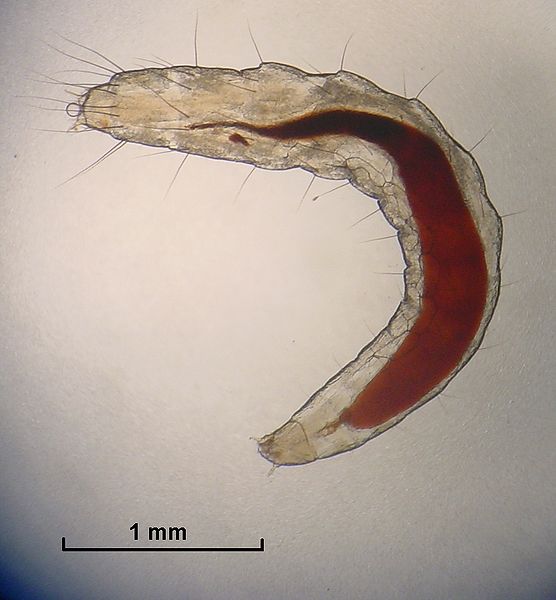In a previous post, we discussed the four stages of a flea’s life cycle: eggs, larvae, pupae and adult. It’s estimated that only 5% of a flea infestation’s population are adults, which means most of an infestation goes unnoticed to homeowners and their family. This week, we’re going to expand on this topic by revealing some interesting facts and information about flea larvae. Whether you’re currently dealing with an infestation or not, it’s important to familiarize yourself with the different stages of a flea’s life cycle — including the larvae — so you can keep these blood-sucking parasites away from your home.
Flea Larvae Emerge From Eggs
Larvae is the second stage in a flea’s life cycle. The female flea lays a batch of eggs (usually 20-30 at a time) where they remain dormant on or around the host for approximately 2-3 weeks. Flea eggs are often difficult to spot due to their incredibly small size; however, with a magnifying glass you can typically notice them covering an infected dog or cat. Flea eggs are small, oval-shaped grains that possess a transparent-to-white color. When they are initially laid by the female, the eggs are transparent. As they edge closer to hatching, though, they develop a white appearance.
When the flea eggs feels like the surrounding conditions are right (temperature and humidity-wise), it will hatch to reveal an ultra-small larvae. While only 5% of a flea infestation are adults, approximately 35% are larvae.
Flea Larvae Are Blind
Here’s a fun (or not-so-fun) fact: flea larvae are actually blind. After closely observing their movements, scientists came to the conclusion that flea larvae lack the ability to see; therefore, they stick to the dark areas for security and protection against natural predators. It’s not until the pupae stage when the flea begins to develop its eyesight.
What Do Flea Larvae Eat?
The good news is that flea larvae don’t feast on the blood of a host, so go ahead and take a deep sigh of relief. When the emerge from their dormant egg state, the blind flea larvae immediately begin searching for energy in the form of dead insects, feces, food crumbs, plant matter and pretty much any other organic material. Being that they are blind, larvae must navigate through touch, feeling their way around cracks and crevices in search for food. After a couple weeks consisting of 3 larval stages, the flea larvae will pupate and begin to weave a silken cocoon.

